Radiant Heating: How It Works And Benefits
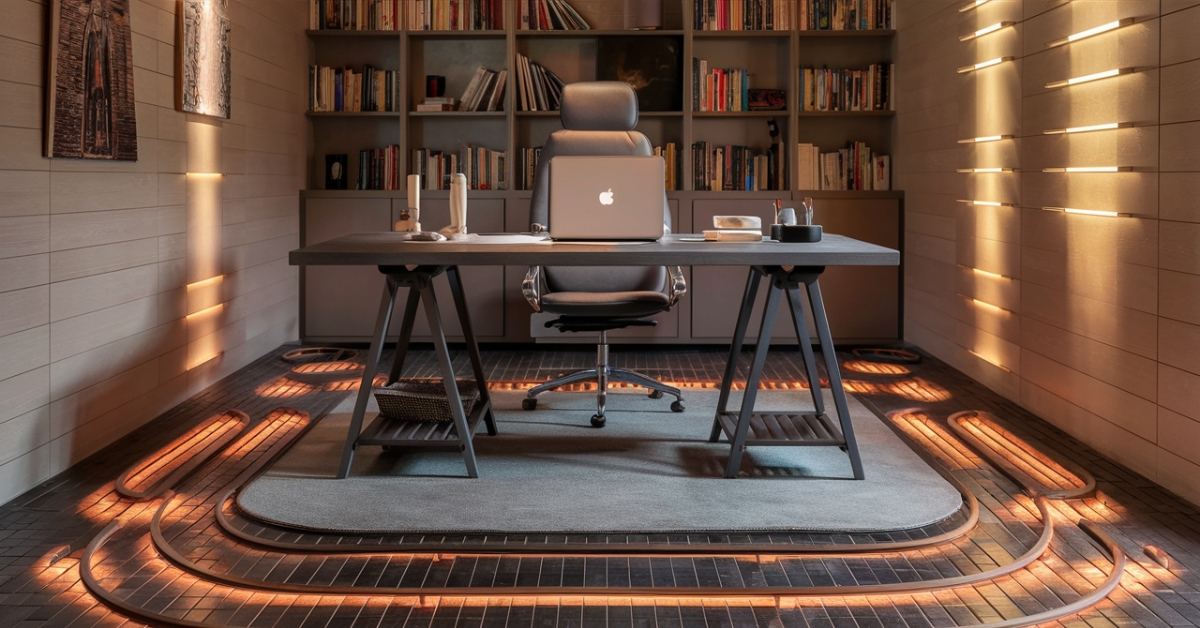
When it comes to keeping your home warm and cosy, investing in a high-quality heating system is essential. But with rising energy costs, finding a solution that's both effective and energy-efficient is more important than ever. Radiant heating is an innovative system that offers consistent, comfortable warmth, making it an excellent choice for larger spaces. In this guide, we’ll explore how radiant floor heaters work and why it might be the perfect addition to your home.
What Is Radiant Heating?
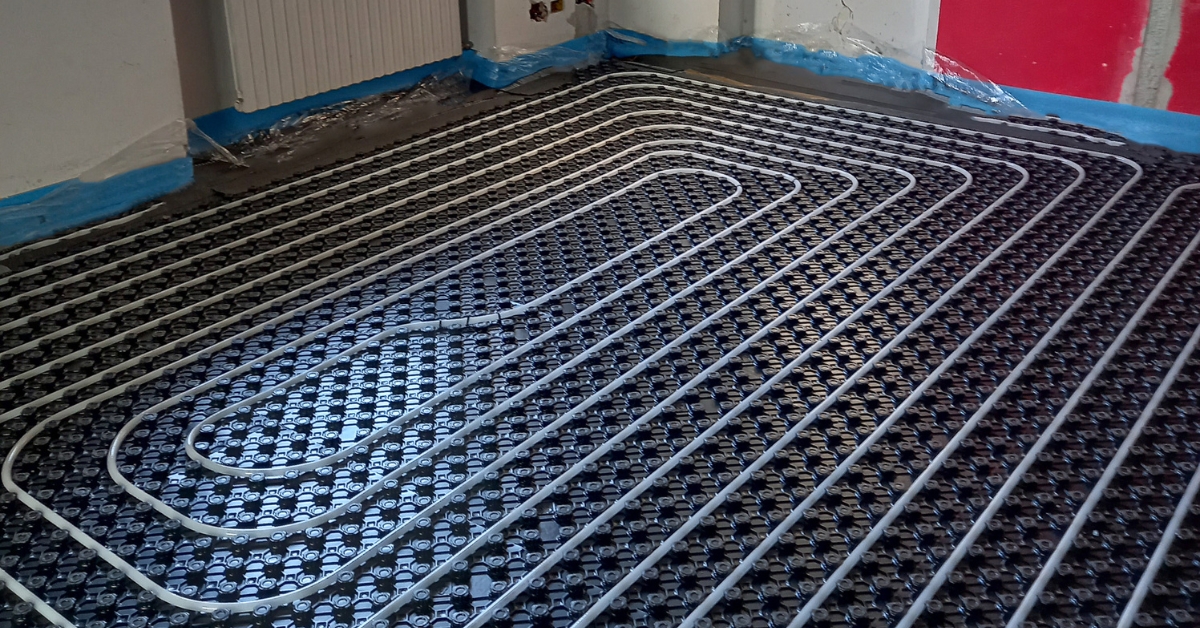
Most of us are familiar with traditional radiators or large boilers that heat our homes. However, radiant heating is a bit different—it’s often hidden from plain sight while still providing lasting heat. Typically found under your flooring, radiant heating can quickly heat large surface areas.
Installing radiant underfloor heaters is becoming one of the most popular ways to save energy. This system essentially turns your floor into a radiator, warming the room from the ground up. Unlike standard heaters that only warm the air around them, radiant heating produces heat that spreads evenly throughout the room. This means no more cold spots! For more information on energy-efficient home heating solutions, check out the U.S. Department of Energy.
How Does Radiant Heating Work?
Radiant heating works by installing electric heating coils or water-heated tubing under your home’s floors. The type of component used depends on the specific radiant heating system. As the floor heats up, the warmth spreads throughout the room from the ground up, creating a cosy and evenly heated environment.
When your system is operating, it transmits radiant heat through a series of electromagnetic waves. These waves are absorbed by anything that touches the heat and are then spread into the room. It’s similar to how the sun heats up a room on a sunny day—objects in the room absorb the heat, creating a warm and comfortable space.
Credit: Live Free
Electric vs. Water-Based Systems
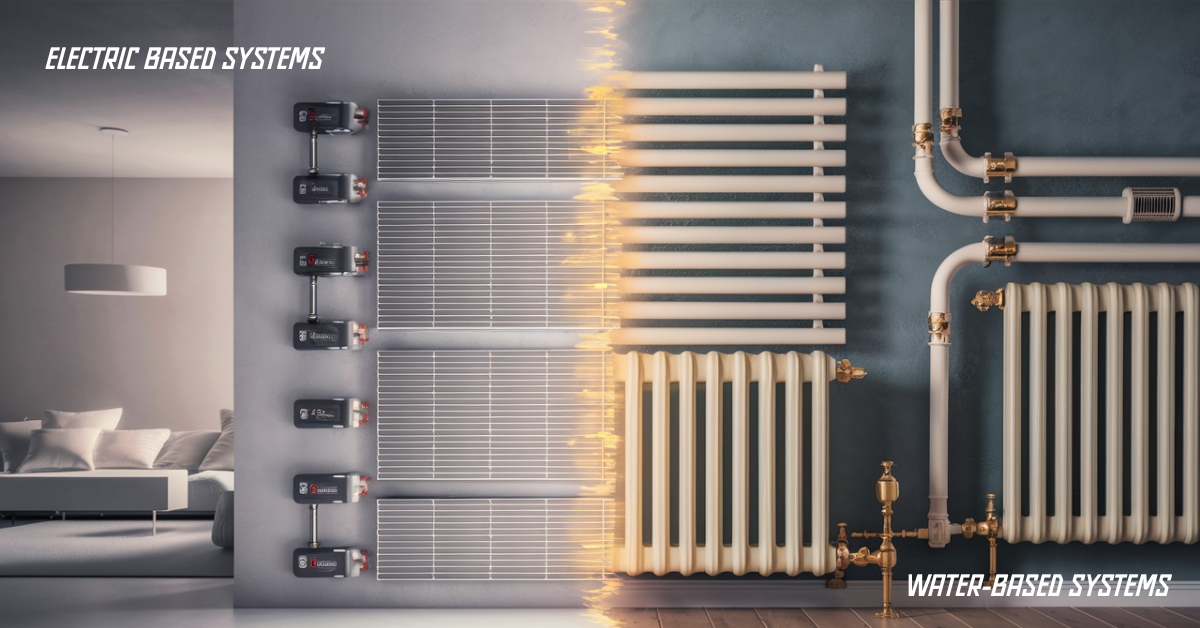
There are different types of radiant heating systems to choose from, each with its own benefits:
- Electric Underfloor Heating: This system uses ultra-thin heating wires installed at floor level. When the heating is turned on, the wires heat up, providing radiant warmth from the floor. These wires come in different formats, such as mat and foil, which you can choose based on your floor type. There's also the membrane and loose wire system, ideal for homes that don’t want to undergo major renovations.
- Water-Based Underfloor Heating: This system circulates warm water through pipes installed underneath the floor. While effective, it’s essential to consider the room’s height before installation, as the pipes can affect floor levels. This system is typically better suited for new builds or significant renovation projects.The Radiant Professionals Alliance offers more insights into the benefits and considerations of water-based systems.
Credit: Underfloor Heating London
What Are The Different Types Of Radiant Floor Heaters?
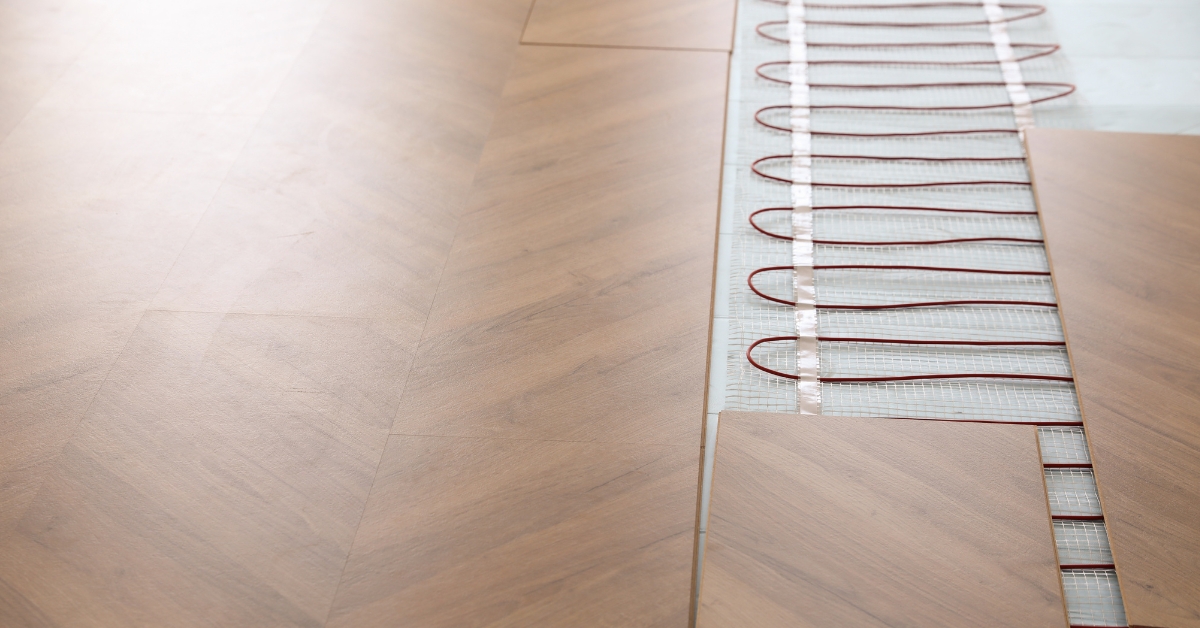
There are three different types of radiant floor heaters, each offering its own set of benefits. Choosing the right kind of radiant heater can help you maximise comfort and efficiency in your home. Let’s explore these three types:
Electric Radiant Heating
Electric radiant heating is one of the most common types of radiant heaters. These systems use heat-conducting plastic mats containing coils, which are warmed by electricity to produce heat energy. The coils, made from resistant wires like nichrome or copper and coated in a water-resistant polymer, create an efficient heating system. Nichrome is particularly important because its high electrical resistance generates significant heat.
Installation is straightforward: a contractor rolls out the electric radiant heating mat and installs the flooring material over it. Many homeowners prefer electric radiant heaters for individual rooms to save on energy costs. To make the system more cost-effective, use it during off-peak energy hours to charge the coils overnight and utilise the stored heat the next day.
Electric radiant heaters work best with ceramic tile flooring, but they are also compatible with other types like hardwood. The heating process is quick, taking about 30 minutes to an hour to warm the floor and subsequently the room. For a cosy start to your day, set the thermostat to heat the floor an hour before you wake up.
DIY installation is possible for small rooms and bathrooms, but you’ll need a professional electrician to wire the heater to a thermostat. The ideal time to install electric radiant heating is during a renovation or new home construction, as it requires tearing up existing flooring. Once installed, electric radiant heaters require minimal maintenance, offering long-lasting performance without frequent repairs.
Shop our wide variety of heaters to find the perfect one for your home
Hydronic Radiant Floor Heaters
Hydronic floor heating systems are an excellent choice if you’re looking to save on energy consumption costs. This system pumps hot water from a boiler through tubing under the floor. The tubing, arranged in a pattern to maximise heat distribution, is controlled by zoning pumps or valves and a thermostat. While the upfront costs are higher, hydronic systems are more energy-efficient and cost-effective in the long run, with a lifespan that surpasses standard boiler systems.
One of the biggest advantages of hydronic heating is the variety of heat sources available, including gas-fired boilers, oil-fired boilers, gas, kerosene, or solar water heaters. The best heat source depends on your home’s size and regional climate. Larger homes in colder areas may benefit from a boiler system, while smaller homes in warmer regions can use regular water heaters.
Consult a radiant heating specialist before installation to determine the best setup, whether it’s a wet or dry installation. The system uses a manifold, a network of pipes that distribute hot water to various areas of your home, allowing for individual temperature control via a single thermostat. This versatility makes hydronic radiant heating an attractive option.
Maintenance for hydronic systems is minimal, typically requiring annual boiler check-ups. If you encounter issues, it’s best to consult a professional for repairs, as the process can be complex. Despite potential repair costs, hydronic systems are designed for long-term reliability with minimal maintenance.
Air Heated Radiant Floors
Air heated radiant floors use forced air to distribute warmth throughout a home. However, this system is less effective than electric or hydronic options because air doesn’t retain heat well, leading to quick dissipation of warmth. Consequently, air heated radiant systems are rarely installed in residential properties. They might be combined with solar air heaters to boost heat output during the daytime, but this is not sufficient for consistent home heating.
For residential heating, electric or hydronic systems are generally the better choices, offering reliable and efficient warmth.
Installation Tips for Radiant Floor Heating
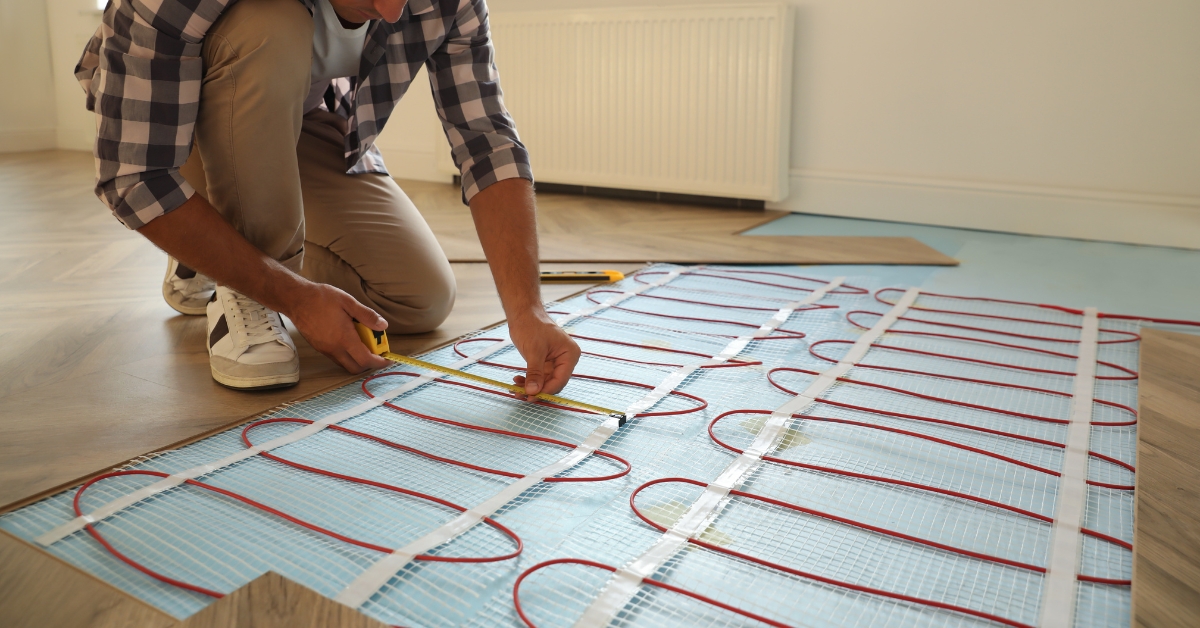
Planning Your Installation
Before you start installing radiant floor heating, thorough planning is essential. Consider the layout of your home and the specific areas where you want to install the system. Whether you’re opting for electric or hydronic heating, the installation process will differ, so understanding the requirements of each system is crucial.
Electric Radiant Heating Installation
Materials Needed:
- Electric heating mats or wires
- Thermostat
- Insulation boards (optional, but recommended)
- Flooring materials (tiles, hardwood, etc.)
- Tools for cutting and fitting
- Preparation: Begin by preparing the subfloor. It should be clean, dry, and level. If you’re using insulation boards, install them first to improve the system’s efficiency.
- Layout: Roll out the electric heating mat or lay the heating wires according to the manufacturer’s instructions. Ensure the heating elements are evenly distributed to avoid cold spots.
- Wiring: Connect the heating mat or wires to the thermostat. This step should be handled by a qualified electrician to ensure safety and compliance with electrical codes.
- Flooring: Once the heating elements are in place and connected, carefully install your chosen flooring material over them. Ensure there are no gaps or air pockets that could affect the heating performance.
- Testing: Before sealing everything up, test the system to make sure it’s working correctly. The electrician should verify that the thermostat is properly controlling the temperature.
Hydronic Radiant Heating Installation
Materials Needed:
- PEX tubing
- Manifold and zoning valves
- Boiler or water heater
- Insulation and vapour barrier (for wet installations)
- Tools for cutting and fitting
- Preparation: Start by preparing the subfloor or concrete slab where the tubing will be laid. For new builds, this is typically done before pouring the concrete.
- Tubing Layout: Lay the PEX tubing in a pattern that maximises heat distribution. The most common patterns are the serpentine or spiral layouts. Secure the tubing with clips or a mesh framework.
- Manifold Installation: Connect the tubing to the manifold, which will distribute the hot water throughout the system. The manifold should be located in an accessible area for maintenance.
- Connecting the Heat Source: Link the manifold to your boiler or water heater. Depending on your setup, you might need additional components like zoning valves or a mixing valve to control water temperature.
- Flooring: If you’re using a wet installation, pour the concrete over the tubing. For dry installations, install the flooring material directly over the tubing.
- Testing and Balancing: Once everything is connected, test the system to ensure there are no leaks and that the heat is evenly distributed. Balancing the system might require adjusting the flow rates on the manifold.
Maintenance Tips for Radiant Floor Heating
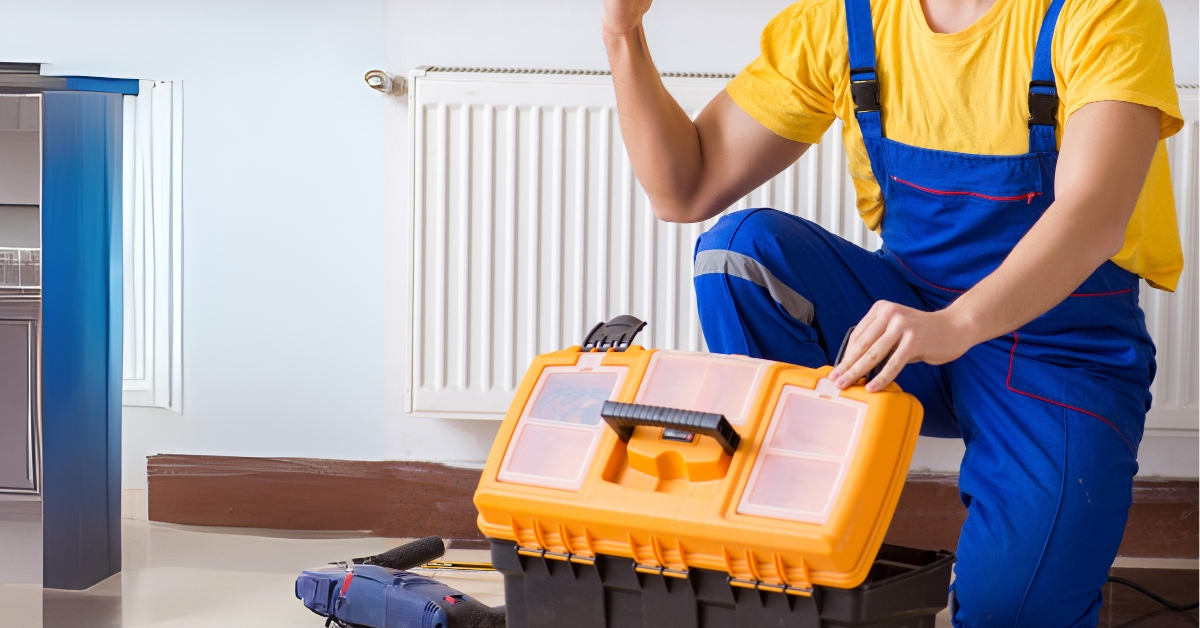
Both electric and hydronic systems require minimal maintenance, but regular check-ups can extend their lifespan and ensure optimal performance.
Electric Radiant Heating
- Annual Inspections: Have an electrician inspect the system yearly to ensure all connections are secure and the thermostat is functioning properly.
- Avoid Damage: Be cautious when installing new flooring or making renovations to avoid damaging the heating elements.
- Thermostat Settings: Regularly check and adjust your thermostat settings to ensure efficient energy use.
Hydronic Radiant Heating
- Boiler Maintenance: Schedule annual maintenance for your boiler or water heater to ensure it’s running efficiently.
- System Flushing: Periodically flush the system to remove any sediment or buildup in the pipes, which can reduce efficiency.
- Leak Checks: Regularly inspect the manifold and tubing for any signs of leaks, and address them promptly to prevent damage.
Also Read: 5 Benefits of Electrical Heating Solutions
What Are Different Types of Radiant Heat Installations?
Once you've decided on the type of radiant heating for your home, you can choose from various installation options to suit your needs and preferences. Here’s a look at the different types of radiant heat installations and their benefits.
Wet or Dry Installation
As previously mentioned, hydronic radiant heating can be installed using either a wet or dry method, depending on the contractor’s recommendations.
- Wet Installation: In this method, a slab of concrete is used to aid the radiant heating process. Contractors either add a concrete slab underneath the subfloor or place a thin layer of concrete between the subfloor and the surface. The concrete acts as a thermal mass, retaining heat even after the heater is switched off. This means you can enjoy lasting warmth. However, due to its density, concrete takes longer to heat up, so hydronic systems with wet installations need to run longer to reach the optimal temperature.
- Dry Installation: Here, the hydronic tubing is placed directly beneath the subfloor without any concrete on top. The flooring surface—whether tile, carpeting, or hardwood—is installed directly above the subfloor, allowing heat to be transferred directly from the tubing. In some cases, reflective insulation might be added under the tubes to direct heat upwards. Dry installations generally heat up faster than wet installations.
Floor Covering Method
The type of flooring you choose significantly impacts the efficiency of your radiant heating system.
- Ceramic Tile is one of the most effective floor coverings for radiant heating, as it conducts and retains heat well. Ceramic tiles allow heat to enter the room efficiently and build thermal storage.
- Carpet: While carpet provides comfort, it’s thicker and doesn’t conduct heat as well as tile or hardwood. If you have carpet and want to install electric radiant heaters, consider using thin carpeting with dense slab foam rubber padding to maximise heat transfer.
- Other Floor Coverings: Materials like linoleum, wood, and vinyl can be used with radiant heating, but they tend to insulate the room, reducing efficiency. For wood flooring, consider laminated wood instead of solid wood to prevent cracking and shrinking due to heat.
For homes with different floor coverings, installing separate tubing loops in each room ensures more efficient heating. This setup allows for hotter water to travel under areas with denser floor coverings, enhancing heat retention.
Radiant Paneling Method
Radiant panels, which can be mounted on ceilings or walls, are typically made of aluminum and heated with electricity. These panels can also be heated using hot water tubing, though this may raise concerns about potential leaks.
- Electric Radiant Panels: Commercially available radiant panels for home use often rely on electricity. While electric panels can be costly to operate, they provide supplementary heat in areas without radiant floor heating, allowing you to extend the functionality of your heating system without investing in additional heaters.
Radiant panels have the fastest response time among heating systems. They can be individually controlled in each room, allowing for quick temperature adjustments and energy savings. For instance, if you enter a cold room, you can simply increase the temperature settings and enjoy warmth within minutes.
Radiant heat paneling operates on a close proximity basis—the closer you are to the panel, the more comfortable you’ll feel. Due to this characteristic, wall-mounted radiant panels are more popular than ceiling installations, as overhead heating can be less effective and comfortable.
| Installation Type | Description | Benefits | Considerations |
|---|---|---|---|
| Wet Installation | Uses a concrete slab to aid in heat retention. Concrete is placed either under the subfloor or between the subfloor and the surface. | Excellent heat retention; continues to radiate warmth even after the system is off. | Takes longer to heat up; higher initial installation cost; ideal for new builds or major renovations. |
| Dry Installation | Hydronic tubing is placed directly beneath the subfloor without concrete. Flooring is installed directly over the tubing. | Faster heat-up time; easier to install in existing homes. | May require reflective insulation to direct heat upwards; less thermal mass compared to wet installations. |
| Electric Radiant Heating | Uses electric heating mats or wires installed beneath the floor. | Easy to install; quick heat-up time; suitable for individual rooms. | Higher operational costs; requires electrical expertise for installation. |
| Hydronic Radiant Heating | Pumps hot water through tubing installed under the floor. | More energy-efficient; lower operational costs; versatile heat sources (gas, oil, solar). | Higher upfront costs; complex installation; ideal for large areas or whole-home heating. |
| Radiant Paneling | Panels are installed on walls or ceilings and heated with electricity or hot water. | Quick response time; provides supplementary heat; space-saving design. | Expensive to operate; proximity-based heating; potential for leaks with water-based systems. |
What Are the Benefits of Radiant Heating?

Radiant heating is an excellent way to enjoy natural, cosy warmth in your home while keeping energy costs low. If you’re used to traditional heating methods, you might be hesitant to make the switch. However, radiant heating systems are a smart investment with numerous advantages. Here are some key benefits of radiant heating:
1. Better Energy Efficiency
Having an energy-efficient heating system is crucial for any homeowner, and radiant heaters excel in this area. These systems are highly efficient because they utilise their heat energy effectively. Unlike forced air systems that need to run constantly to keep a room warm, radiant heaters slowly dissipate warmth and use convection to maintain a comfortable temperature. With proper insulation and high-quality flooring materials, you can enhance the heat retention of your radiant system, saving on energy costs in the long run.
2. High Flexibility
Radiant floor heaters are incredibly flexible and can be installed in any type of property. Whether you’re building a new home, renovating, or adding an extension, radiant heating can be adapted to suit your needs. These systems can be installed on any floor—downstairs, upstairs, or even in individual rooms. The versatility of radiant heaters means you can enjoy their benefits in any part of your home.
3. Invisible Design
One of the standout features of radiant heaters is their discreet, invisible design. Unlike bulky radiators and central heating systems, radiant heaters are hidden beneath the floor, maintaining the aesthetic of your room. This frees up space and allows you to design your interior without the constraints of visible heating units. You can enjoy comfortable warmth without compromising on style.
4. Easy and Safe to Use
Radiant heating is uncomplicated and user-friendly. These systems can be turned on and off with a simple switch, and many come with easy-to-read thermostats that provide clear temperature readings. Unlike radiators, radiant heaters don’t have sharp edges or hot surfaces that could pose a risk to children. Additionally, your floor will never become too hot to walk on, providing a safe and comfortable heating solution.
5. Smart Thermostat Compatibility
For even greater functionality, consider pairing your radiant heater with a smart thermostat. Many radiant heating systems are compatible with smart thermostats, offering enhanced energy-saving options. With a smart thermostat, you can set schedules, create timers, and build heating zones for specific rooms. This allows for more accurate temperature control and increased efficiency.
6. Low Maintenance Option
Once installed, radiant heating systems require minimal maintenance. In electric systems, the wiring is embedded in your floor, eliminating the need for regular upkeep. Hydronic systems use leak-free piping materials to ensure smooth operation. These qualities provide peace of mind and reliable, high-quality heating without the hassle of constant repairs.
What Are the Best Areas to Install Radiant Heating?
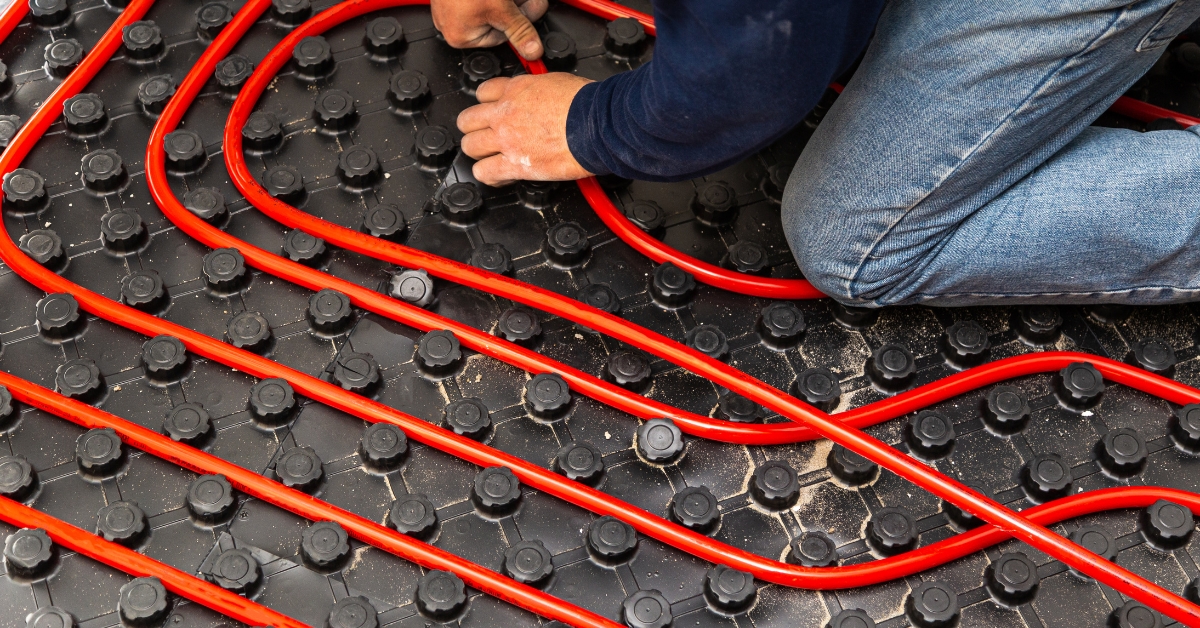
Radiant heating systems allow you to control individual heat settings in any room, making heating more efficient by only warming the spaces you use. Here are some of the best areas to install radiant heating:
1. Bathrooms
Bathrooms are ideal for radiant floor heating because they often have tile flooring that can become uncomfortably cold in winter. With radiant heating, you can avoid stepping onto a freezing surface. This system keeps your bathroom comfortably warm all year round without the worry of mechanical parts being exposed to water and humidity.
2. Bedrooms
Creating a cosy and welcoming bedroom is essential during the winter months. Radiant floor heating systems help maintain a warm and toasty environment, ensuring a good night’s sleep. Uneven temperatures from inefficient heating can disrupt your sleep, but radiant heaters provide consistent warmth for a comfortable rest.
3. Kitchens
Like bathrooms, kitchens often have tile flooring that can become very cold in winter. The added humidity can make the kitchen an uncomfortable place. Installing radiant heating in your kitchen can solve these issues, keeping the space warm and comfortable making it a more pleasant area to cook and spend time in.
How to Make the Most of Your Radiant Floor Heating?
While radiant heating systems are highly effective on their own, several steps can be taken to maximise their efficiency and ensure excellent heating throughout your home. Here are some tips to help you create a welcoming and cosy environment during the harsh winter months.
1. Weatherize Your Home to Prevent Heat Loss
Weatherization is one of the most cost-effective ways to conserve heat energy in your home, making it an excellent complement to your radiant heating system. By weatherizing, you can keep your home warm and comfortable even during severe winters. This involves adding insulation and sealing any air leaks in your home’s infrastructure.
Air infiltration, such as drafts near windows and doors, can let in chilly air and make your heating system work harder. Conduct a home energy assessment to locate any air leaks, which might come from windows, doors, chimneys, wiring, and light fixtures. Once identified, sealing these areas can significantly improve insulation and cut heating costs.
A properly insulated roof is particularly important during winter, as it prevents cold air from entering your home and disrupting the warmth generated by your radiant heating system.
2. Add Insulation to Your Attic and Basement
Insulating your attic and basement is another effective way to keep your home warm during winter while enjoying the benefits of radiant heating. Proper insulation prevents warm air from escaping, ensuring that once your home is heated, the warmth stays locked in.
With good insulation, you won’t need to keep your heater running as long, which can lead to significant savings on your energy bill. This means you can enjoy a cosy home without constantly worrying about energy costs.
3. Consider Solar Energy
Pairing solar energy with your radiant heating system can further reduce your electricity costs. Solar energy is an excellent way to decrease your household's energy demand, especially if you live in an area that receives ample sunlight.
Solar power can run both electrical and hydronic heating systems, providing a cost-effective solution to heating your home. Investing in solar energy allows you to heat your home efficiently without breaking your budget.
4. Improve Your Air Ducts to Conserve Heat Energy
Air ducts play a crucial role in distributing heat throughout your home. Poorly sealed, sized, or insulated ducts can lead to higher energy bills and reduced heating efficiency.
Ensure your air ducts are in good condition, replacing any that do not move air adequately. Leaky ducts can waste significant amounts of energy by allowing heated air to escape into lofts and crawl spaces. Insulating or sealing air ducts in uninhabited rooms can help conserve heat and reduce energy costs.
Conclusion
Radiant heating is a smart investment that provides efficient and comfortable warmth without driving up your energy costs. By taking steps such as weatherizing your home, adding insulation to your attic and basement, considering solar energy, and improving your air ducts, you can maximise the benefits of your radiant heating system. These enhancements ensure that your home remains cosy and energy-efficient throughout the winter months. With minimal maintenance required, radiant heating offers a reliable and long-lasting solution for creating a warm and welcoming environment in any room of your home.
FAQs
1. What is radiant heating, and how does it work?
Radiant heating systems provide heat directly to the floor or panels in the wall or ceiling of a house. They work by distributing heat evenly from the ground up through electric coils or water-heated tubing, creating a comfortable and consistent warmth.
2. Is radiant heating more energy-efficient than traditional heating systems?
Yes, radiant heating is generally more energy-efficient than traditional forced-air systems. It heats spaces more evenly and retains warmth longer, reducing the need for continuous operation and lowering energy costs.
3. Can radiant heating be installed in any type of home?
Absolutely! Radiant heating is highly flexible and can be installed in new builds, renovations, and existing homes. It can be used in various types of flooring, including tile, hardwood, and even carpet with the right padding.
4. What maintenance does a radiant heating system require?
Radiant heating systems require minimal maintenance. Electric systems need occasional checks on the thermostat and wiring, while hydronic systems might need annual boiler check-ups and periodic flushing to remove sediment.
5. Can radiant heating be combined with other energy-saving methods?
Yes, radiant heating can be paired with other energy-saving methods, such as solar energy and proper home insulation. Combining these methods can significantly reduce energy consumption and enhance the overall efficiency of your heating system.

